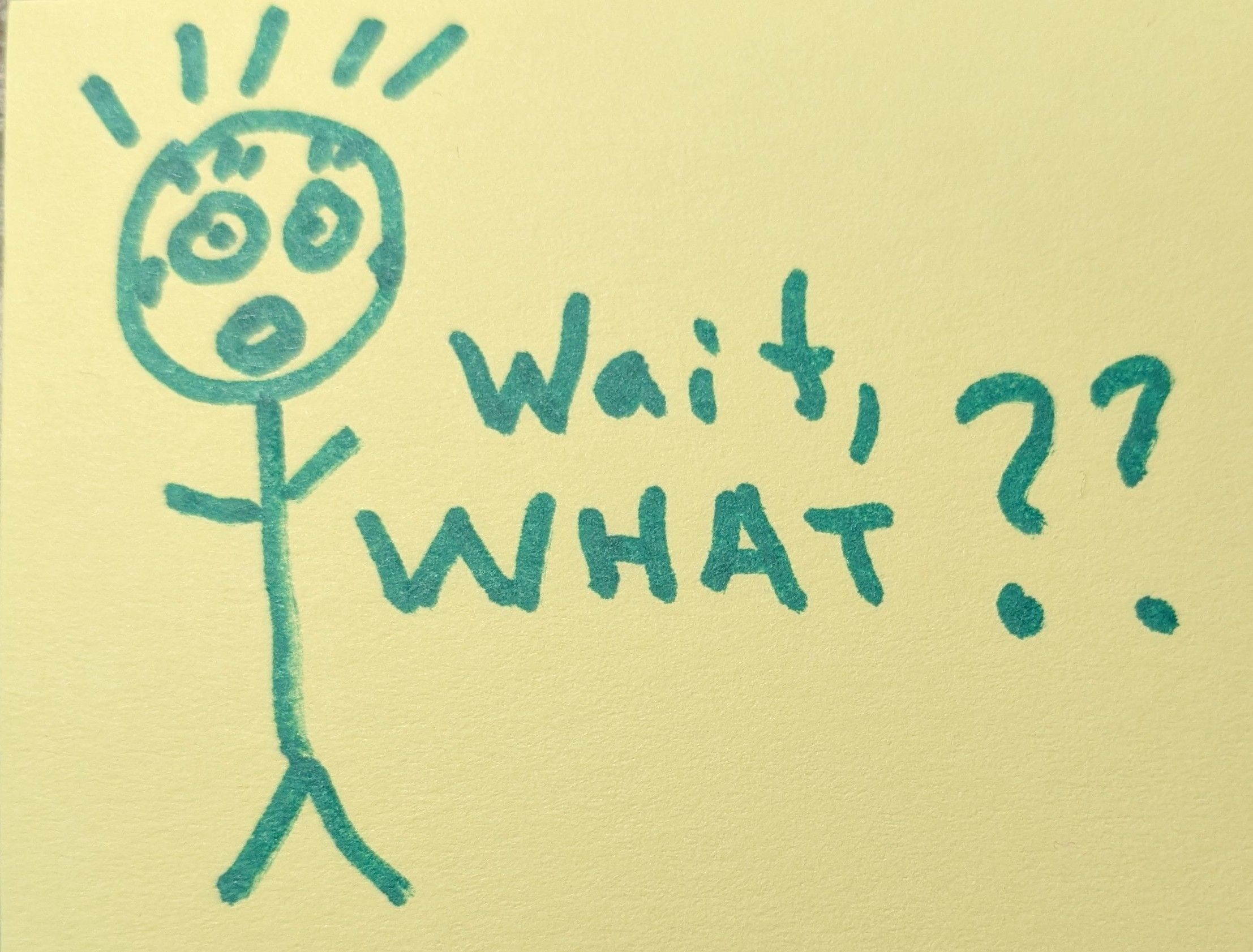How to read ¬∃A(A=A)
Almost anyone who can read the statement ¬∃A(A=A) will tell you that it’s nonsense. That’s because they are putting the acc-ENT on the wrong syll-AH-ble.
The statement ¬∃A(A=A) reads, “there does not exist an A such that A=A”. Nonsense, right? It is a tautology that for every A, A=A. So how can we possibly make sense of a claim that there is no A such that A=A?
Easy: put the accent on the first half of the sentence. The half that reads, “there does not exist an A”.

Wait, what?
Jump to section titled: Wait, what?When I argue that there is no A such that A=A, I am not talking about a situation where there is something you can properly call A, yet it is not self-identical. Instead, what I argue is that there isn't anything in the physical world that you can properly denote with a symbol (like A).
❌ Not this! Given some A, A≠A. <<-- INCORRECT
✅ This! In the actual, physical world, there is nothing you can represent correctly with a symbol like A.
But how are we supposed to understand a physical world where nothing can be correctly represented using a symbol?
An analogy
Jump to section titled: An analogyThe situation is not as weird as it sounds. We are actually quite accustomed to it!
First, consider how we ordinarily use symbols to represent reality. There are plenty of examples where reality seems to be well-represented by a symbol: any object that appears to be a well-defined “thing”. The speed of light. The fine structure constant. My computer mouse. Etc.
If my thesis about ontic vagueness is correct, each involves an idealization: at the very least, we are obliged to “idealize away” their intrinsic vagueness. [I have Christopher Pincock’s definition of an idealization as the “assumption of something that we take to be false,” in mind here. (Mathematics and Scientific Representation, Oxford University Press, 2012: 96)]
Idealization is normal.
Jump to section titled: Idealization is normal.Whenever we try to describe something that is in flux in static terms (which we do all the time) we idealize away the vagueness with which we refer to it. (This is not ontic vagueness; it’s just a vague reference.)
For example, I talk about “my kitchen table” as if it were not in flux (at the atomic level), but a stable thing with crisp boundaries such that I can refer to it unambiguously, and represent it with a symbol. Let’s call my table T. I generally think of my table as being the same as itself; i.e., T=T. But if I carry out a sufficiently precise experiment to see if it is really true that T=T, I will run into problems. Really! Let's try it...
How might I carry out such an experiment? Well, two things that are equal have the same properties. So why don’t I measure everything about my table twice and see if, in fact T=T?
And now I go and measure all the properties of my table and – what do you know – there are discrepancies. Why? Because at the atomic level, T at one instant has subtle differences from T a moment later, and a sufficiently precise experiment can catch the discrepancy.
So, it’s actually perfectly normal to run into a problem with T=T in the ordinary course of measuring things. And there is nothing mysterious; we can diagnosis the problem as follows: my reference T is too vague to support a measurement as precise as the measurement I took.
But remember, that’s only an analogy.
Jump to section titled: But remember, that’s only an analogy.In the case of T, assuming the vagueness is merely referential vagueness, we can always solve the vague reference problem by clarifying our reference to the table so that T refers to something precise enough to meet the needs of a particular experiment. For example, we can define it as a function of time, T(t) so T(3:01pm) refers to my table at exactly 3:01pm, which we might hope will address any issues of vague references, at least with respect to time.
Let's compare this a situation where our problem with an identity A=A arises because A is not just referentially vague (like T), but ontically vague.
With ontic vagueness, the physical situation is different because the fuzziness of what we're vaguely denoting as A is intrinsic. But we can talk about this situation in exactly the same way as in ordinary cases of vague references. In each case, what the symbol (A or T) refers to is vague. And as a result, we can design experiments to test whether A=A or T=T and find contradictions.
But there’s a key difference: if the world is ontically vague, it not true that you can always improve your definition of A or T sufficient to meet the requirements of any experiment designed to determine whether A=A or T=T. There’s a limit to how much you can improve the description, because it isn’t just the description that is fuzzy. It is reality itself.
Recap!
Jump to section titled: Recap!There literally does not exist an A such that A=A. It’s not because of the equals statement. It’s that there does not exist anything you can correctly represent with a symbol: there is no A.
Links
Jump to section titled: Links- Open access PDF Ontic Vagueness: The Argument from Freedom
- Kindle version Ontic Vagueness: The Argument from Freedom
License
Jump to section titled: LicenseCopyright © Adam Weisberg (2025) Creative Commons Attribution Non Commercial No Derivatives 4.0 International